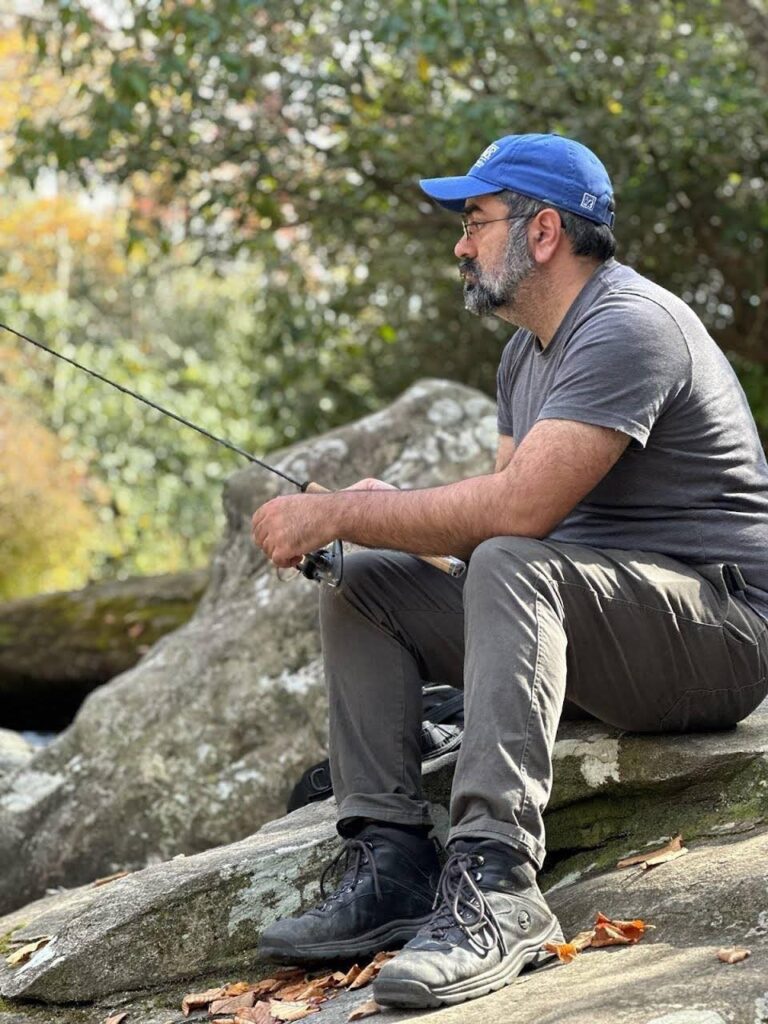
Early Days
From a young age, I was fascinated with nature – and had an immediate affinity to reptiles, amphibians, and arthropods. Growing up in Western NY, I would routinely go out in search of garter snakes, bullfrogs, snapping turtles, or whatever else I was able to find and bring home. Instead of playing sports with the other kids in the neighborhood, I would spend my time looking at field guides to be able to identify all the animals I would find in the fields.
It did not take long for folks in the neighborhood to see me as the best person to ask for identification of whatever random animal ended up in their basement. Decades later, these interests have yet to fade!
At about 6 years old, I ended up getting my first pet reptile – a green iguana from a family friend. Needless to say, green iguanas do not make great pets, and some of my first lessons in herpetology were learned!
In the late 1990s, I purchased my first pet snake – a baby wild-type ball python for $7 from a flea market stand. From that point on, I have never gone a day without a reptile (or many) in my house!
College Years
After high school, I immediately went off to college – smuggling my few pet snakes into my dorm room. Before finishing a degree, I decided that I needed more real-world experience, and left college to acquire that experience. While working a variety of different entry-level jobs, this was when I began breeding reptiles for the first time – Leopard geckos, Bearded Dragons, and Ball Pythons were among the first. I started selling the babies to local pet stores, and eventually realized that there was enough of a market for these animals to open my own small reptile shop. Soon after, I was introduced to ball python morphs – which were relatively new at the time (early 2000s). This new information was absolutely fascinating to me – I had never given any thought to genetics up until that point. After a short time of learning about the genetics of ball python morphs (the few that were available at the time anyway), I decided that I would go back to school and finish a degree in genetics.
I left the retail industry, went back to school, and quickly realized that there was a lot more to genetics than I ever thought possible from my brief study of how ball python morphs worked! I finished my Bachelor’s Degree in Molecular and Cellular Biology in 2010. During the completion of this degree, I still kept a relatively large collection of reptiles (mostly ball pythons and crested geckos at that point). I was also volunteering with local wildlife rehabilitation groups, helping with their reptiles – as well as beginning the process of starting up a group focused on local educational demos and education (acquiring New York State licensing for housing and display of venomous snakes, crocodilians, and large constrictors), with a goal of educating the local community about reptiles and amphibians – both native and invasive in the United States.
Graduate School Era
Upon completing my Bachelor’s degree, I decided that I wanted to continue pursuing a career in the sciences – specifically focused on research. With the help of my undergraduate research mentors, I was able to enroll in a graduate program in the State University of New York at Buffalo, in the department of Biological Sciences. During graduate school classes
It was at this stage in my life that I felt comfortable re-launching my reptile breeding projects, focusing almost exclusively on hatching ball python morphs and genetic combos that I was interested in owning – I had seen pictures of “silver ball pythons” and REALLY wanted to hatch one of my own, starting only with single-mutation animals from my original collection from years prior. Fortunately, I was able to rapidly get pairings set and was able to achieve that goal in 2012 – at which point I decided that I would launch “Sterling Serpents“. During my graduate studies, I had the opportunity to design and teach a new herpetology course for undergraduate students in the department of biological sciences – discussing the evolution, physiology, and development of reptiles and amphibians.
PhD and Beyond
I completed my PhD in May of 2015 – studying microbial genetics and polymicrobial interactions, and decided to continue my research career by taking on a postdoctoral fellowship studying the gut microbiome and it’s impacts on aging at the University of North Carolina, Chapel Hill’s Center for Gastrointestinal Biology and Disease. This transition prompted me to make the difficult decision to sell off the vast majority of the Sterling Serpents breeding stock, and focus on my career in biomedical research.
After completing this fellowship in 2019, I took on a role of Technical Director of the UNC-Microbiome Core Facility – developing new technologies and approaches to study complex microbial communities.
In 2021 – While attending a local reptile show for the first time since moving to North Carolina (~6 years after significantly reducing operations of Sterling Serpents), I decided that it was time to get back into the reptile world!
I accepted a position as Assistant Professor of Molecular Genetics and Microbiology at Duke University in 2022, and have since become the Assistant Director of the Duke Microbiome Center. I was elected president of the North Carolina Branch of the American Society for Microbiology as of late 2023, and am now able to expand my scientific research beyond microbiology to include herpetological questions.